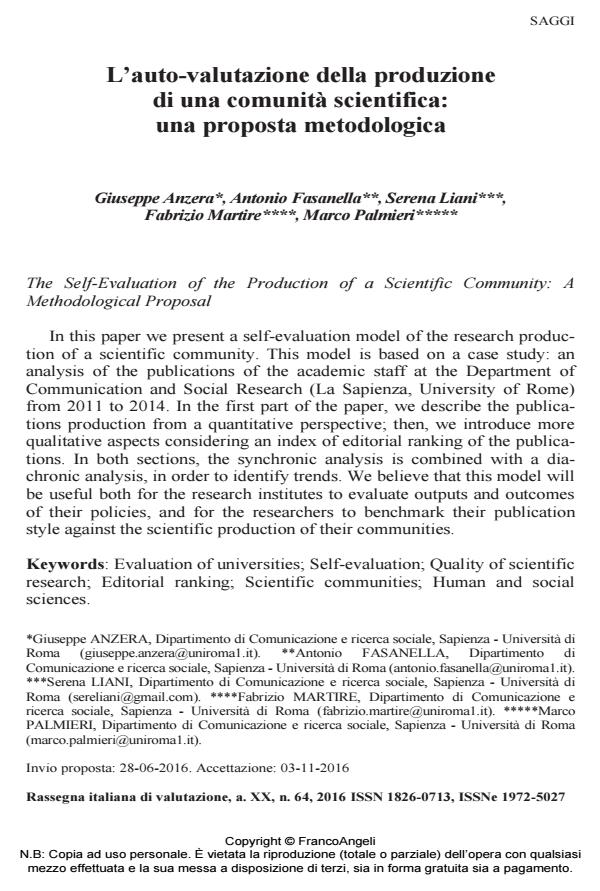The Self-Evaluation of the Production of a Scientific Community: A Methodological Proposal
Journal title RIV Rassegna Italiana di Valutazione
Author/s Giuseppe Anzera, Antonio Fasanella, Serena Liani, Fabrizio Martire, Marco Palmieri
Publishing Year 2017 Issue 2016/64
Language Italian Pages 20 P. 112-131 File size 1035 KB
DOI 10.3280/RIV2016-064007
DOI is like a bar code for intellectual property: to have more infomation
click here
Below, you can see the article first page
If you want to buy this article in PDF format, you can do it, following the instructions to buy download credits

FrancoAngeli is member of Publishers International Linking Association, Inc (PILA), a not-for-profit association which run the CrossRef service enabling links to and from online scholarly content.
In this paper we present a self-evaluation model of the research production of a scientific community. This model is based on a case study: an analysis of the publications of the academic staff at the Department of Communication and Social Research (La Sapienza, University of Rome) from 2011 to 2014. In the first part of the paper, we describe the publications production from a quantitative perspective; then, we introduce more qualitative aspects considering an index of editorial ranking of the publications. In both sections, the synchronic analysis is combined with a diachronic analysis, in order to identify trends. We believe that this model will be useful both for the research institutes to evaluate outputs and outcomes of their policies, and for the researchers to benchmark their publication style against the scientific production of their communities.
Keywords: evaluation of universities; self-evaluation; quality of scientific research; editorial ranking; scientific communities; human and social sciences
- La valutazione della ricerca nell'area delle scienze politico-sociali. Primi risultati di un'indagine sull'università italiana Cristina Sofia, Elena Valentini, Erika Nemmo, in SOCIOLOGIA E RICERCA SOCIALE 115/2018 pp.118
DOI: 10.3280/SR2018-115007
Giuseppe Anzera, Antonio Fasanella, Serena Liani, Fabrizio Martire, Marco Palmieri, L’auto-valutazione della produzione di una comunità scientifica: una proposta metodologica in "RIV Rassegna Italiana di Valutazione" 64/2016, pp 112-131, DOI: 10.3280/RIV2016-064007